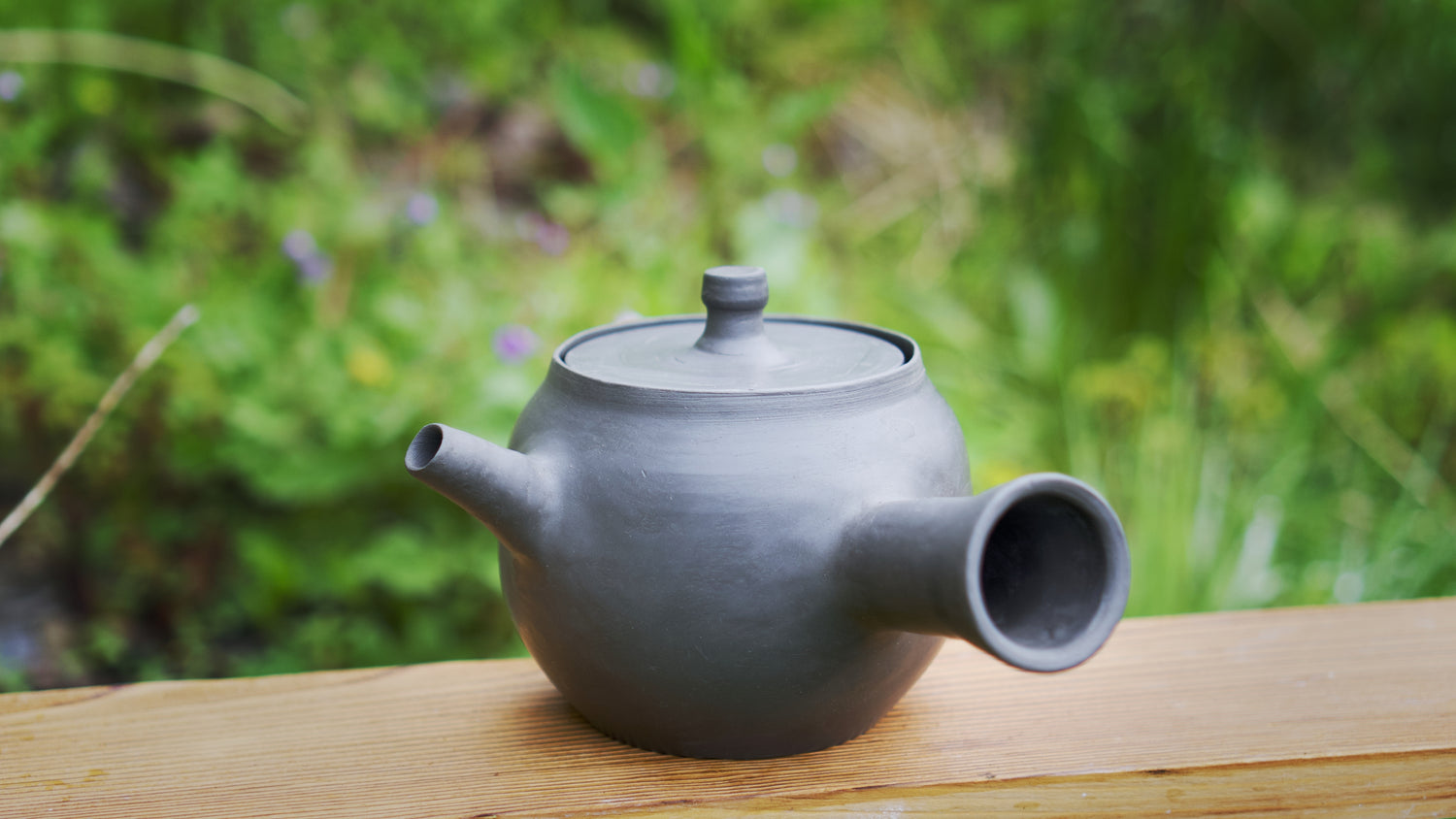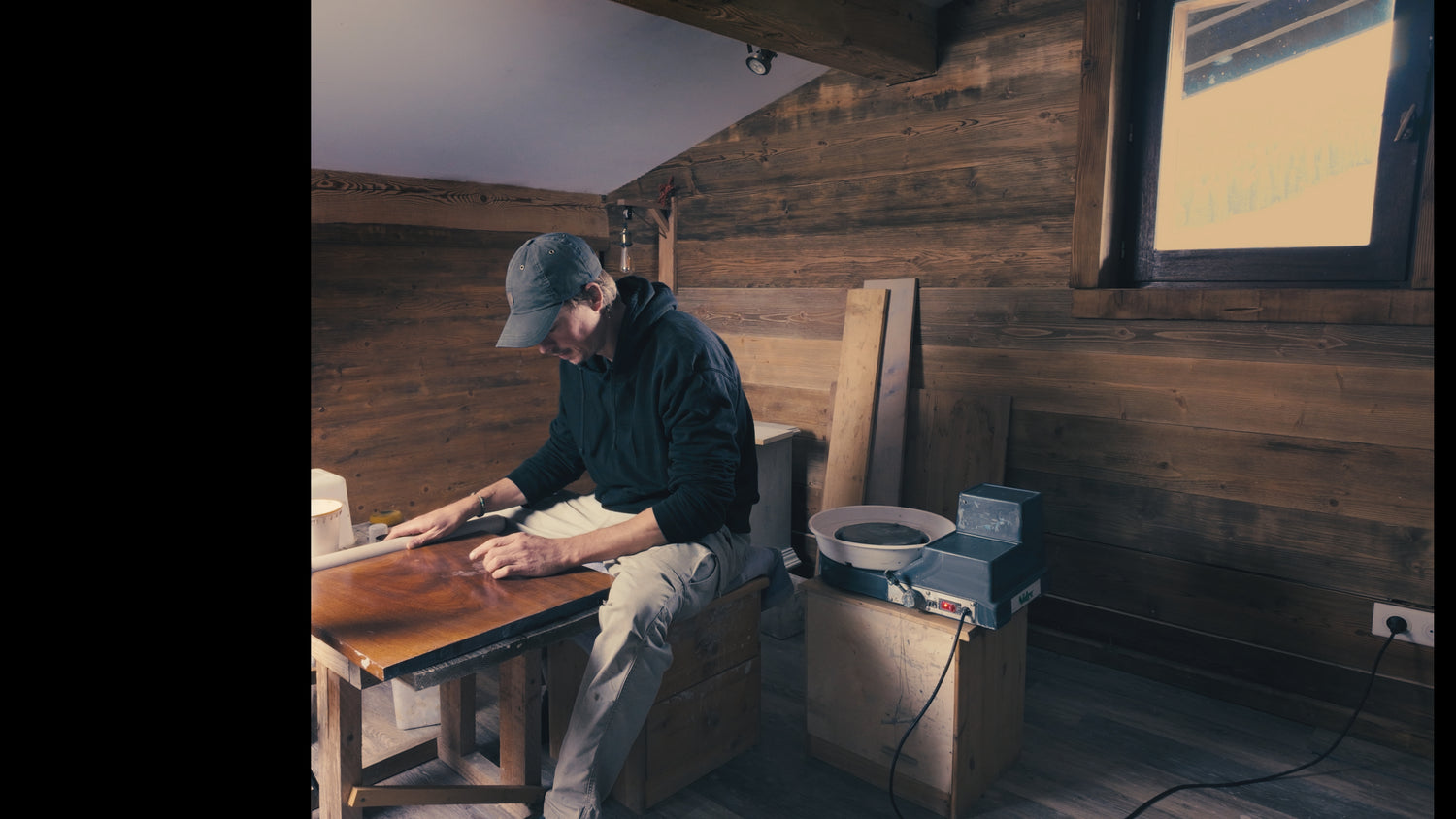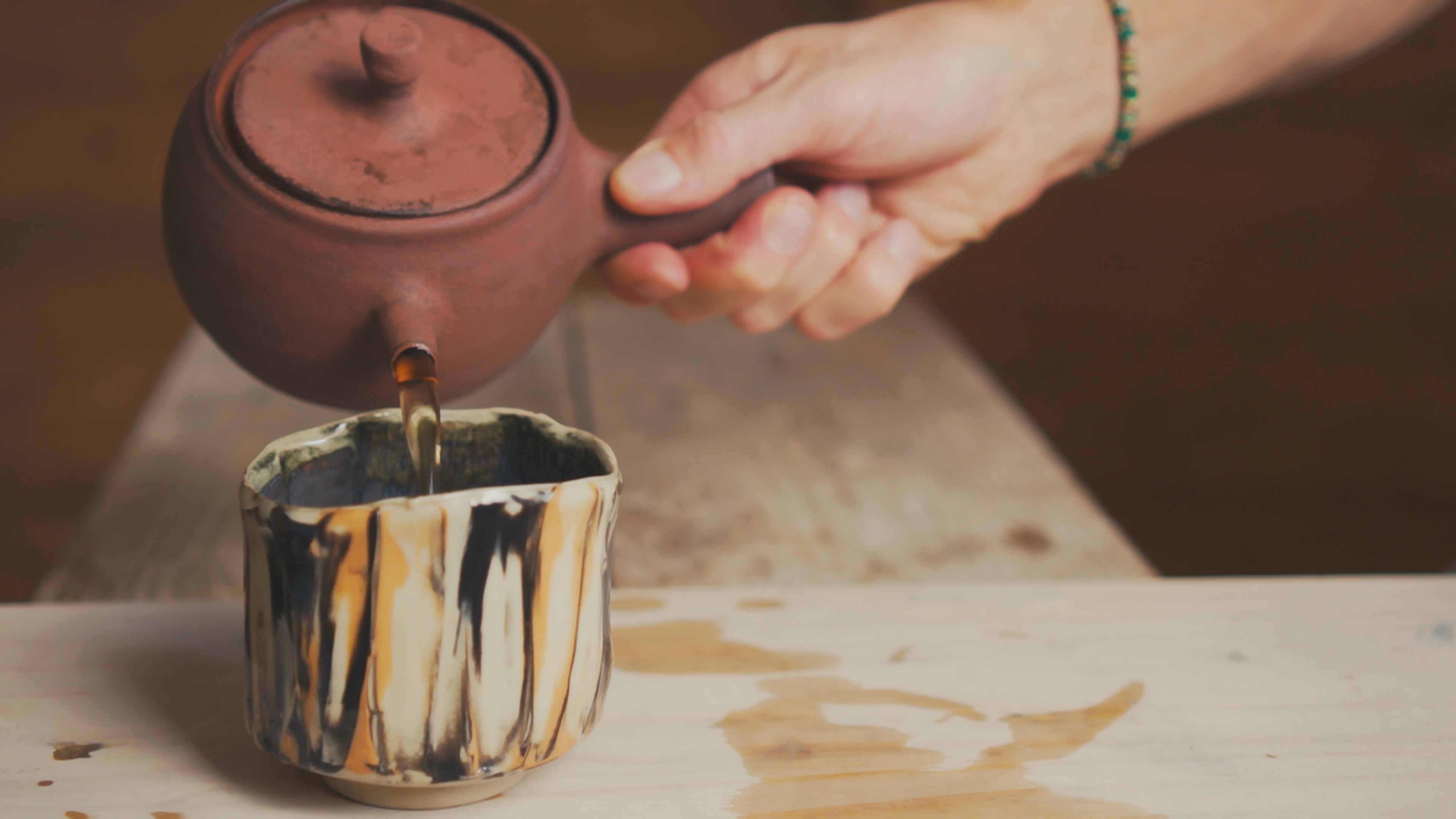
Of all the forms in pottery, the teapot holds something special.
It’s complex, functional, and full of character. It brings people together. It slows things down.
And over time, it tells its own story.

I’m Duncan, and I make teapots by hand in the French Alps.
I started working with clay after years as a chef, as a way to bring together two crafts I
love—cooking & pottery. At first, I was designing tableware to complement food, thinking about how shape, texture, and colour could enhance the experience of eating. But over time, I kept coming back to teapots. I’m not exactly sure why. There’s something about their shape, their purpose, the quiet moments they’re part of. I just kept being pulled towards them.
I use natural stoneware clay from Puisaye—an area in France known for its rich, mineral-heavy clay. It’s beautifully suited to teapots, especially when left unglazed, it allows the clay to speak—its texture, its warmth, its quiet presence.
Each teapot is thrown, trimmed, assembled, and fired with care. I don’t think of them as perfect objects, but as living tools—meant to be used daily, stained with tea, and to tell a story of their journey over time.
When you use a pot you love, pour with intention, brew leaves instead of using a bag—it changes the pace of things. Not on purpose. It’s just what seems to happen.

Why unglazed?
Unglazed teapots have many benefits. The clay retains heat gently and evenly, helping the tea to steep more naturally. Over time, the teapot absorbs a trace of the tea itself — deepening the flavour in subtle ways and building a kind of memory into the pot. No two pieces age the same way, and that’s part of what makes them special.

